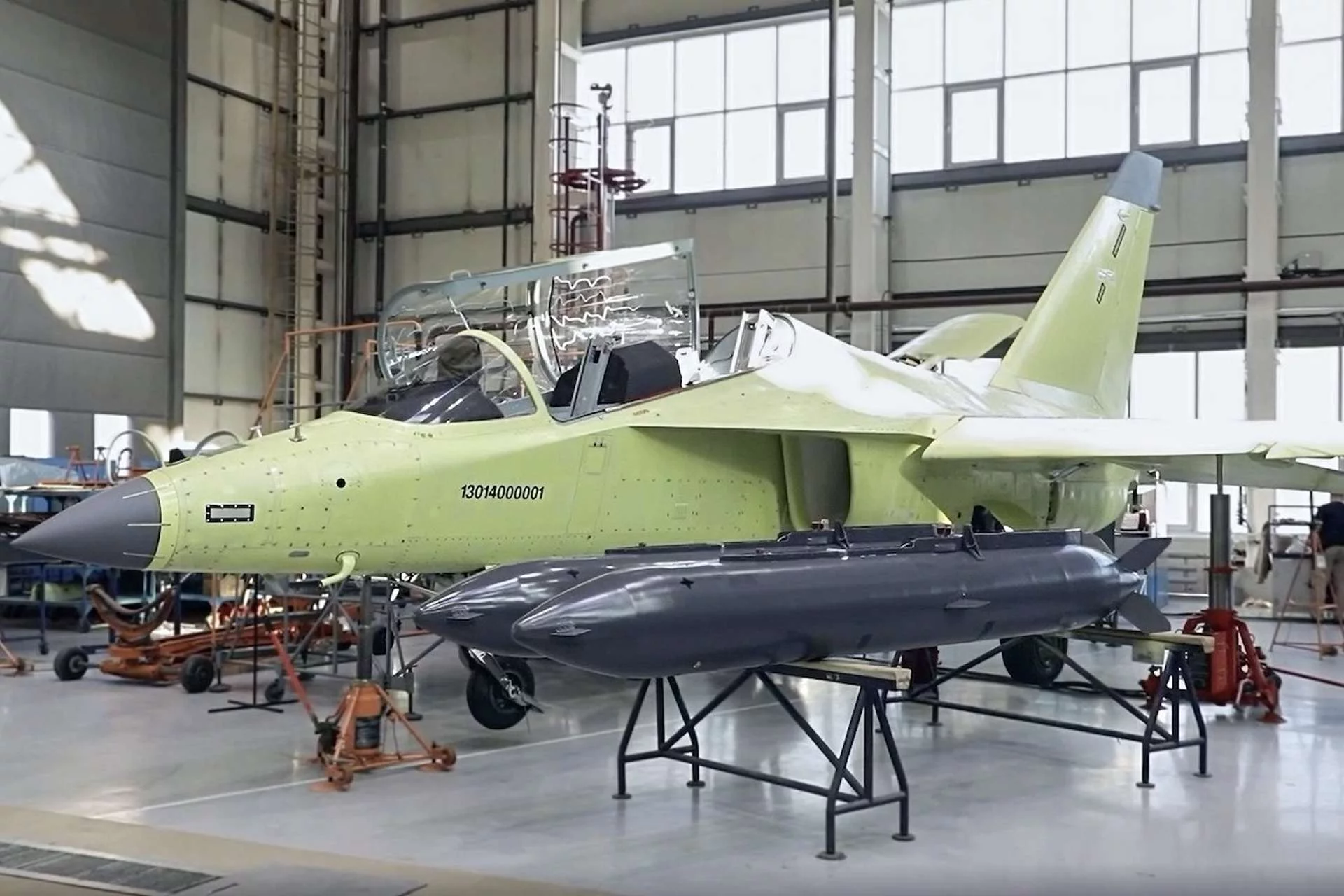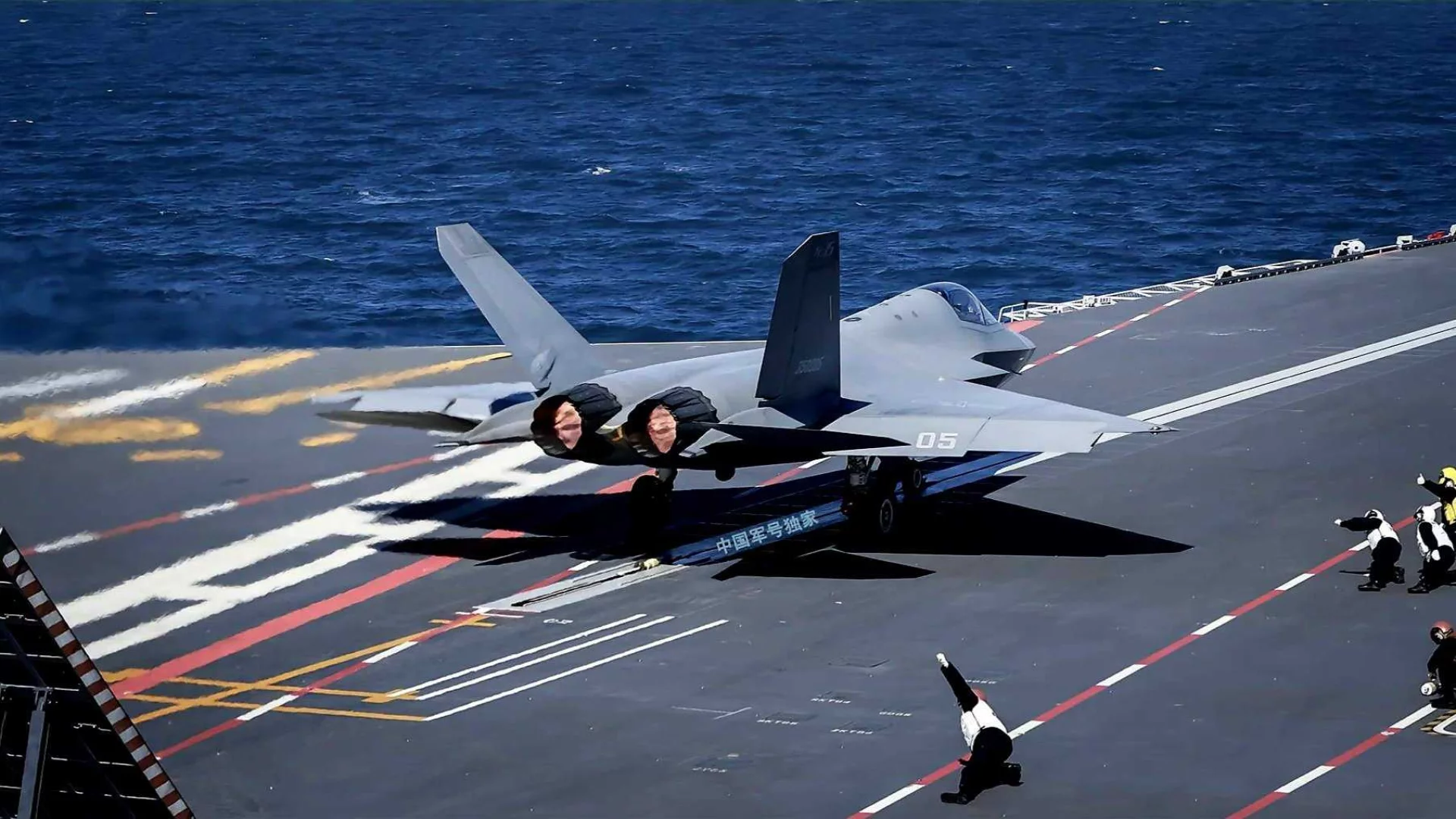In a significant development that’s set to reshape the landscape of military aviation, Russia’s United Aircraft Corporation (UAC) has officially announced that the first prototype of the Yak-130M combat trainer has commenced its ground and flight testing phases. This milestone was revealed on October 10, 2025, by Rostec, the state-owned conglomerate overseeing much of Russia’s defense industry. Built at the renowned Irkutsk Aviation Plant, this upgraded version of the venerable Yak-130 is not just an incremental improvement—it’s a bold evolution designed to transform a reliable advanced trainer into a versatile light-attack aircraft capable of operating in all weather conditions, day or night. With two additional prototypes already in the assembly line, the program is gaining momentum, signaling Russia’s commitment to modernizing its air force while offering a cost-effective solution for global operators seeking multi-role capabilities without breaking the bank.
The Yak-130, originally developed by the Yakovlev Design Bureau, has been a cornerstone of Russia’s pilot training regimen since its introduction into service in 2010. Known for its twin-engine design, tandem seating arrangement, and advanced embedded training systems, the aircraft was engineered to simulate the handling and avionics of fourth- and fifth-generation fighters like the Su-35 or Su-57. This makes it an ideal Lead-In Fighter Trainer (LIFT), bridging the gap between basic flight training and operational combat aircraft. However, the Yak-130M takes this foundation several steps further by integrating cutting-edge mission systems that expand its role into credible light combat operations. According to official details from Rostec, the prototype features the BRLS-130R radar, which provides enhanced detection and tracking capabilities for both air-to-air and air-to-ground targets. Complementing this is the SOLT-130K electro-optical/laser targeting system, enabling precise identification and engagement of threats even in low-visibility conditions.
But that’s not all—the Yak-130M also incorporates the President-S130 defensive aids suite, a sophisticated electronic warfare package designed to counter incoming missiles and radar-guided threats through jamming, decoys, and advanced countermeasures. Rounding out the upgrades is the KSS-130 communications complex, which ensures seamless integration with other assets in a networked battlefield environment. These enhancements allow the aircraft to employ a wide array of weapons, including air-to-air missiles for self-defense and precision-guided air-to-surface munitions with satellite or laser guidance. This means pilots can now conduct realistic 24/7 training exercises that mimic real-world combat scenarios, all while maintaining the aircraft’s primary role as a trainer. Imagine transitioning seamlessly from classroom simulations to live-fire drills in pouring rain or pitch-black nights—this is the kind of versatility that could redefine how air forces prepare their pilots for modern warfare.
The Yak-130’s track record speaks volumes about its reliability and appeal. In addition to serving the Russian Aerospace Forces, the aircraft has found homes in several international air forces. Algeria, for instance, has utilized it for both training and light-attack missions, leveraging its agility and low operating costs. Bangladesh, Belarus, and Laos have also adopted the type, appreciating its ability to perform in diverse environments. More recently, Iran received its first Yak-130s in 2023 and has demonstrated their combat prowess by integrating missile systems during military exercises. Vietnam’s 2020 order further highlights the platform’s growing popularity in the Asia-Pacific region, where nations seek affordable pathways to advanced fighter proficiency. This global footprint provides a solid foundation for the Yak-130M, as potential upgrades could be retrofitted to existing fleets, extending their service life and enhancing their utility.
When compared to international competitors, the Yak-130M positions itself as a formidable contender in the light-combat trainer market. Take Italy’s Leonardo M-346FA, for example: this aircraft builds on the M-346 trainer by adding the Grifo-M-346 fire-control radar and a suite of multirole weapons, allowing it to handle air policing, close air support (CAS), and even armed reconnaissance. Several air forces, including those in the Middle East and Europe, have embraced it for its dual-role efficiency. Similarly, South Korea’s KAI FA-50, an evolution of the T-50 Golden Eagle, has matured into a compact multirole fighter. Export variants feature advanced radars, datalinks, and precision munitions, making it suitable for quick-reaction alerts, strike missions, and advanced training. The FA-50’s success in markets like the Philippines and Iraq underscores the demand for such hybrid platforms. If the Yak-130M’s new systems prove effective during trials—delivering reliable situational awareness, accurate targeting, and robust defenses—it could carve out a niche in this competitive space, offering similar capabilities at potentially lower acquisition and maintenance costs, thanks to Russia’s established production lines.
From a strategic perspective, the Yak-130M serves multiple purposes for Russia and its allies. Domestically, it bolsters the nation’s pilot training pipeline by providing a more immersive experience that closely mirrors the complexities of frontline aircraft. This is crucial in an era where air forces must maintain high readiness levels amid geopolitical tensions. Moreover, as a light-attack asset, it can be deployed in secondary theaters, border patrols, or base defense roles, freeing up more expensive heavy fighters for high-threat missions. This force-multiplier effect is particularly valuable under budget constraints, allowing Russia to generate additional combat capacity without massive investments. On the international front, UAC and Rostec are eyeing export opportunities in emerging markets across Asia, Africa, and Latin America. Countries with limited defense budgets but growing security needs—such as those facing insurgencies or territorial disputes—could find the Yak-130M an attractive option. It combines training, airspace policing, and precision-strike capabilities in one package, potentially undercutting Western alternatives in price-sensitive regions.
The program’s timing is also noteworthy. As global defense spending shifts toward multi-domain operations and unmanned systems, there’s still a strong need for manned trainers that can evolve into combat roles. The Yak-130M’s pivot from pure emulation of advanced fighters to active combat participation reflects broader trends in military aviation, where platforms are expected to wear multiple hats. If the ongoing testing campaign—encompassing ground evaluations for system integration and flight trials for performance in various weather conditions—validates these upgrades, the aircraft could enter production swiftly. This would not only sustain jobs at the Irkutsk plant but also reinforce Russia’s position as a key player in the global arms trade. Challenges remain, of course: ensuring the new sensors integrate seamlessly without compromising the aircraft’s flight characteristics, and navigating export restrictions amid international sanctions. Yet, early indications from Rostec suggest optimism, with the focus on delivering a “low-cost force multiplier” that many operators are eagerly monitoring.
In summary, the Yak-130M represents a smart, pragmatic upgrade to a proven design, blending advanced training with light-combat prowess in a way that’s both innovative and economical. As trials progress, the world will watch to see if this Russian jet lives up to its promise, potentially influencing air force doctrines and procurement decisions worldwide. For now, it’s a clear sign that Moscow is doubling down on adaptable, affordable aviation solutions in an increasingly unpredictable security environment.




